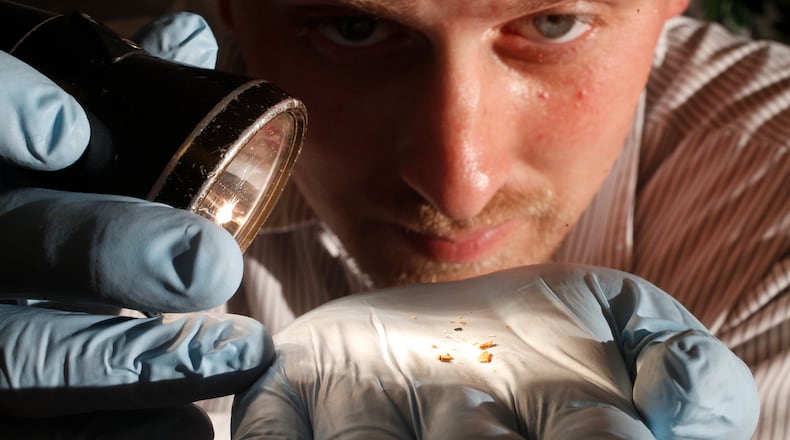Bed bugs are very resilient and difficult to control if they are brought into a home or hotel, Orkin entomologist Ben Hottel said in a statement.
“As summer travel picks up, it is critical that people know the best ways to identify, prevent and control these pests,” he said.
Terminix
Terminix says the Dayton market is the 11th most bed bug infested city in America.
The company says the rankings are based on what cities have the most bed bug control services. The company says it uses internal service data from its more than 300 U.S. branches, and the analysis takes into account “urban density” and the frequency of service requests.
Terminix’s list has the Cleveland-Akron (Canton) region ranked even higher (3rd in the nation), while Columbus ranked 12th; Cincinnati, 14th; and Toledo, 40th. Philadelphia and New York claimed the No. 1 and 2 spots.
Dayton ranked 25th for bed bugs in 2023 and 21st in 2021.
Orkin
Orkin’s 2025 bed bug rankings says Dayton is the 43rd most infested city in the nation. Last year, Dayton held the 33rd spot on Orkin’s list.
Orkin and Terminix both released their rankings in June.
Orkin says Cleveland was 2nd in the nation for bed bugs (behind Chicago), while Columbus was 8th; Cincinnati, 13th; Youngstown, 22nd; and Toledo, 36th. Orkin says the rankings were determined using bed bug treatment data for metro areas between May 2024 and May 2025.
Orkin says travelers should inspect their bags and luggage for the insects during and after travel. The bugs are talented hitchhikers that often cling to luggage, purses and personal belongings.
The company says bed bugs are flat, oval-shaped, brown and are about the size of an apple seed. The insects are “hematophagous,” which means blood is their only food source. They often like to feast on sleeping humans.
Bed bugs are a recurring problem that can occur at any time, and insects spread easily and multiply quickly, so early detection is key, said Dan Suffoletto, spokesperson for Public Health — Dayton & Montgomery County.
Public Health does not conduct inspections or respond to complaints about bed bugs in private homes, but occasionally it receives complaints about bed bugs in other settings, Suffoletto said. Public Health received nine bed bug complaints last year, and two so far this year.
The health department advises community members to look for signs of the pests in mattress seams, furniture joints, and cracks and crevices in furniture.
They produce tiny white eggs, shed their skins and their droppings create dark spots or streaks, often on bedding or furniture. Heavily infested areas might have a musty or sweet odor.
The health department says DIY pest control activities often fail to get rid of the problem because bed bugs are so good at hiding. The agency recommends people hire professionals for the job.
What can/should people do to get rid of bedbugs?
Work with professionals:
- Hire a licensed pest control company experienced in bedbug treatment.
- Follow their instructions carefully.
Reduce hiding spots:
- Declutter rooms and minimize items near beds or sofas.
- Seal cracks in walls, furniture and baseboards.
Clean and isolate:
- Wash bedding, clothing, and curtains in hot water and dry on high heat (at least 30 minutes).
- Use mattress and box spring encasements designed to trap bedbugs.
- Vacuum frequently, especially mattress seams, bed frames, and carpet edges—and empty the vacuum immediately into a sealed bag.
Monitor and follow up:
- Use bedbug interceptors under bed legs to monitor activity.
- Be prepared for repeated inspections and treatments. Elimination can take weeks to months.
About the Author



